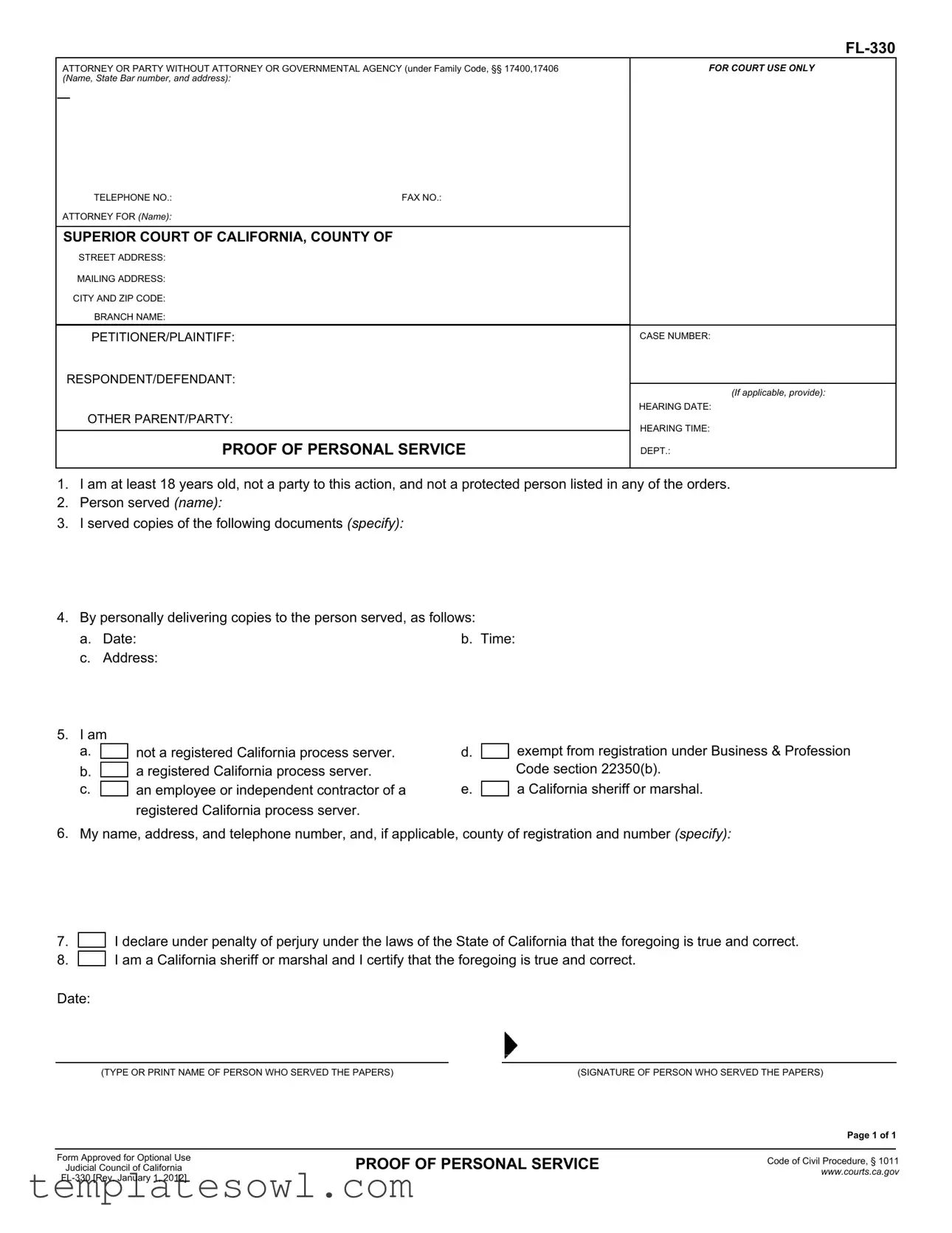What is the FL 330 form used for?
The FL 330 form is primarily used to document proof of personal service in family law cases in California. This form verifies that legal documents have been delivered to an individual involved in the case, ensuring that they are officially notified about court proceedings or actions taken. Proper service is crucial for maintaining the integrity of the legal process.
Who can serve papers using the FL 330 form?
Not just anyone can serve legal documents. The form allows for service by different parties, including registered California process servers, sheriffs, or individuals over the age of 18 who are not involved in the case. Additionally, employees or independent contractors of registered process servers can also perform this task, provided they meet specific criteria outlined in the form.
What information is required on the FL 330 form?
The FL 330 form requires various details to be filled in accurately. This includes your name and contact information, the name and details of the person being served, the date and time of service, and a specification of the documents that were delivered. Ensuring this information is correct is essential for the court’s records.
Is there a specific format for filling out the FL 330 form?
Yes, there is a structured format that must be followed when completing the FL 330 form. Each section needs to be filled out in the provided areas, and any signatures must be clearly written. The form also requires a declaration under penalty of perjury, confirming that the details filled in are true and correct to the best of your knowledge.
What happens if I do not file the FL 330 form?
If the FL 330 form is not filed after serving legal documents, it may lead to complications in the case. The court may not acknowledge the service as valid, which can delay proceedings or affect the outcome of the case. Proper documentation of service is vital for upholding legal standards.
Can I submit the FL 330 form electronically?
In many cases, you can submit the FL 330 form electronically, but this depends on the specific court's policies. Some courts may allow online submissions, while others might require physical copies to be filed in person or by mail. Always check with your local court for their submission guidelines.
What do I do if I make a mistake on the FL 330 form?
If you make an error on the FL 330 form, it's important to correct it. Depending on the severity of the mistake, it might be as simple as crossing out the incorrect information and writing the correct details. However, if the error is substantial, you may need to complete a new form altogether to prevent confusion.
Is there a deadline for filing the FL 330 form?
Yes, there is a deadline for filing the FL 330 form after documents have been served. It is generally required to be submitted shortly after the service is completed, ensuring compliance with court timelines. It's always a good practice to check specific court instructions for exact deadlines to avoid any potential issues.
Where can I find the FL 330 form?
The FL 330 form can be found on the California court's official website and is usually available in the self-help or family law sections. You can also obtain physical copies at your local courthouse. Make sure to use the most recent version of the form to ensure compliance with current regulations.

